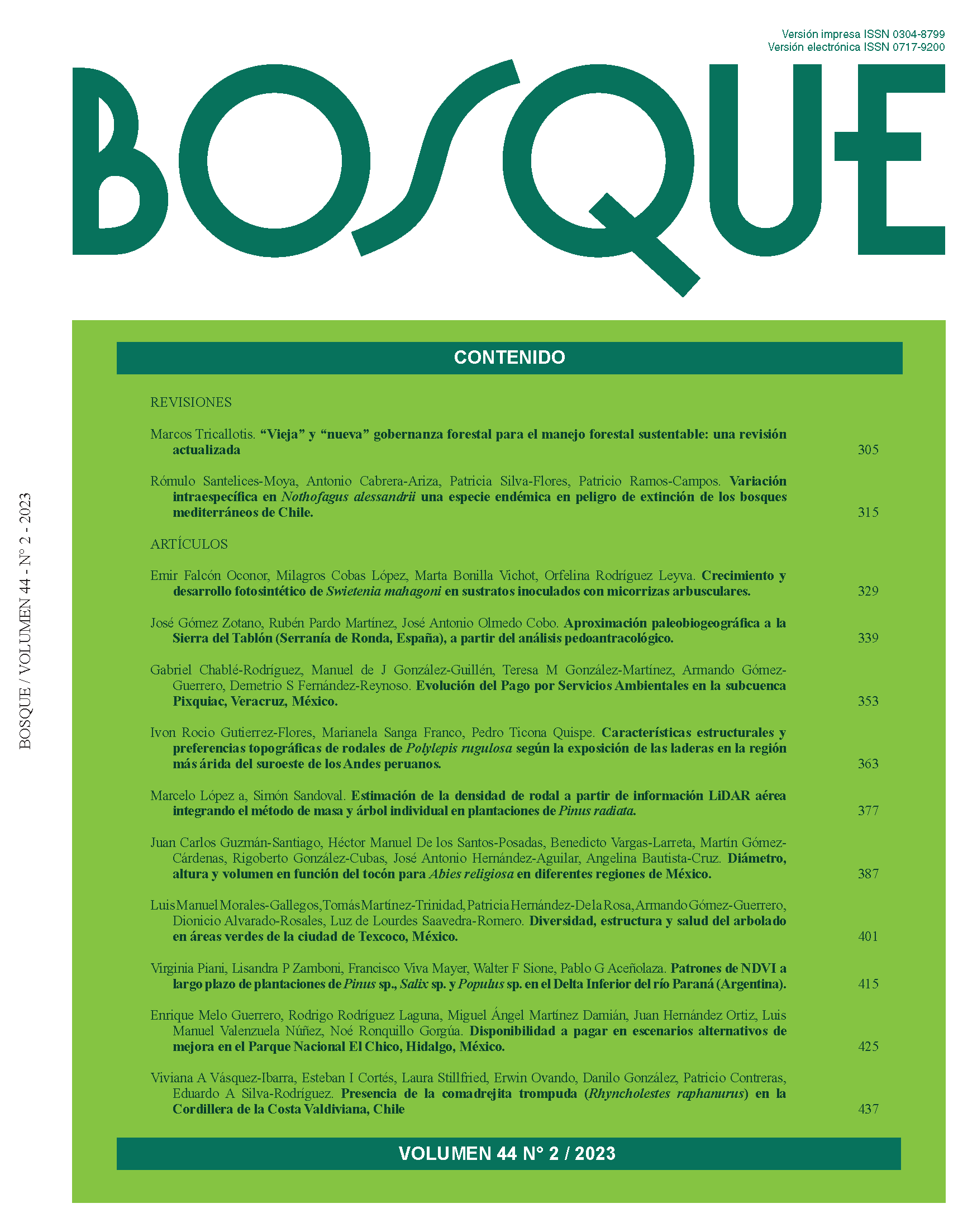Intra-specific variation in Nothofagus alessandrii, an endemic and endangered species of the Mediterranean forests of Chile
Main Article Content
Abstract
In forest conservation, especially in a changing climate, it is essential to understand the intraspecific variation of multiple functional traits in a species. Accordingly, the analysis of Nothofagus alessandrii, an endangered species from Chile, could play an important role as a basis for future conservation of genetic resources and restoration of its forests. This study aims to analyze the variation of this species, considering its spatial distribution, variation in ecological distribution, populations associated with forest typology, genecological differentiation, variation in growth, and genetic variation. The information analyzed shows that these forests cover 314 hectares in a very restricted area, with little variation in environmental conditions, only showing variation in sun exposure and in fertility of soils. Although there are no differentiated growth zones, there is evidence that growth can vary. Genetic studies have shown varying levels of genetic diversity and differences between populations. Habitat fragmentation is emerging as the main threat to the survival of the species, as it can cause genetic isolation, inbreeding depression, genetic drift, and loss of adaptive potential. Based on existing research and the analysis carried out, a second experimental phase is proposed in order to select populations capable of adapting to changing environmental conditions due to climate change. It is important to take into account the microbiome of this species and establish efficient conservation and restoration measures for its forests. In summary, the analysis of the variation of N. alessandrii is crucial for the conservation of this species in a changing climate.

